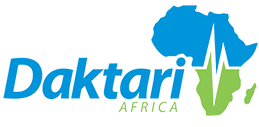Categories
Topic : Hypertensive emergencies and Hypertension in Pregnancy
Kindly share the biggest challenges you experience in taking care of hypertensive emergencies and hypertension in pregnancy and other special conditions.
Comment on this Article
Saddam Hassan
Dr. Fadhil Hussein
Effat Abdulwahab
Mbarak Mbarak
Dr. Mohamed Naji
Dr. QHALIB ALI ABDI
Dr. Ivy Barasa
Zainab Bagha
STELLA SOITA
Charles Ndirangu
Charles Ndirangu
Dr. Cedric Tumbo
Dr. Haji Musuko
Naomi Munywoki
Uzma Bagha
Geoffrey Sangany
Dr. Michael Milimu
Dr. Maureen Maleche
Dr. Khuweillah Rudainy
Alfred Bikeri Manduku
Evans Wanyama
Pauline Kamau
mutwiri rarama
Dr. Aarif Varvani
Florence Karanja
Jane Kenani
Dr. Timothy Kaleli
Fredrick Otieno
Caroline Bichii
Priscilla Mbigo
Robert Ngasa
Dr. Rajab Idris
Dr. Ngugi Wamuyu
Dr. Tendwa Ongas
Clement Kanyiri
Bella Juma
Ms. amina noor
tobias odhiambo
Muthoni Maina-Luzing'a
Emily Ndiang'ui
Umulker Haji
Abdikadir A. Adow
Tommy Temesi
Dr. Pateti Kelvin
BONFACE ATANDI OMARE
BONFACE ATANDI OMARE
Benard Owino
Winfred Nyanya
Dr. Moenga Masese
Dennis Nanyingi
Dr. Robbinson Nduati
Ruth Komu
Francis Soita
David Okeyo
Abdulaziz Abeid
Dr. Magdalene Randa
Dr. Ombati Mokua
Peter Olyam